23 Incredible Moments Of American Grocery Stores Dating Back To The 1800s

Step right up and grab a virtual shopping cart—we’re heading on a quirky, captivating stroll through the grocery aisles of American history!
From dusty general stores of the 1800s to the slick, scanner-filled supermarkets of today, the evolution of grocery shopping is packed with surprises. Who knew your weekly chore was actually part of a rich and fascinating legacy?
Whether you’re a history buff, a foodie, or just someone who’s wondered how we got from bartering for beans to online grocery delivery, this list has something to delight you.
From the game-changing invention of self-service shopping (yes, people used to not pick out their own items!) to the short-lived but futuristic drive-in grocery concept, we’re diving into 25 jaw-dropping, charming, and sometimes downright odd moments that reshaped how America shops. Ready to roll down the aisles of time? Let’s unpack the past, one grocery milestone at a time!
1. The General Store – A Community Hub
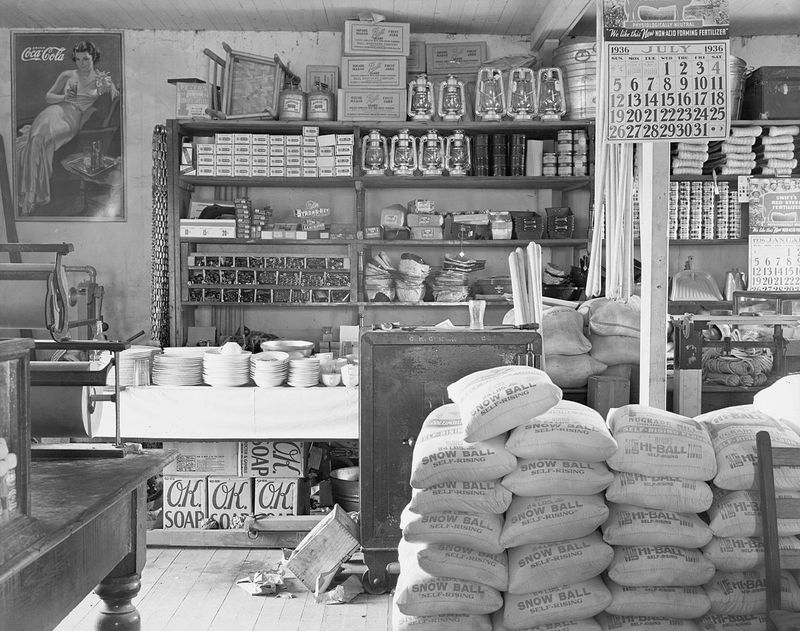
If you were shopping in America in the early 1800s, you’d probably find yourself at a general store. These stores were the heart of communities, where you’d hear the latest gossip along with the chime of a cash register. From dry goods to fresh produce, they had it all. What’s more, they were often the only spot in town to grab a cup of sugar or a spool of thread.
Do you remember the smell of fresh wood and spices when you walked in? That’s because these stores were made entirely of wood, from ceiling to floor. The potbelly stove in the center kept everyone warm during those long, cold winters. If you were lucky, the store owner might even offer you a warm cup of coffee.
These stores were more than retail establishments; they were social gathering places. People exchanged stories and news, and sometimes even played a game of checkers on a lazy afternoon. Life was simple, yet rewarding. The general store was a place of community spirit, where everyone knew your name.
2. A&P – The Great Beginning

In 1859, the world of groceries made a quantum leap with the founding of The Great Atlantic & Pacific Tea Company, commonly known as A&P. Imagine starting as a tea and coffee shop and growing into a grocery giant. That’s like planting a seed and watching it grow into a beanstalk towering over the lands. Before you knew it, A&P was the talk of the town.
Their unique selling proposition? Quality products at an affordable price, quite a revolutionary concept back then. The store layout, though simple by today’s standards, was groundbreaking. Shelves stocked with exotic teas and aromatic coffees were an instant hit.
Over time, A&P expanded their offerings, setting the stage for the modern grocery store. They became a household name, much like the tea they sold. For many, A&P wasn’t just a store; it was a symbol of reliability and quality. This journey from a modest tea company to a chain of grocery stores was nothing short of remarkable. It wasn’t just a store; it was a revolution.
3. Woolworth’s Five-and-Dime Magic
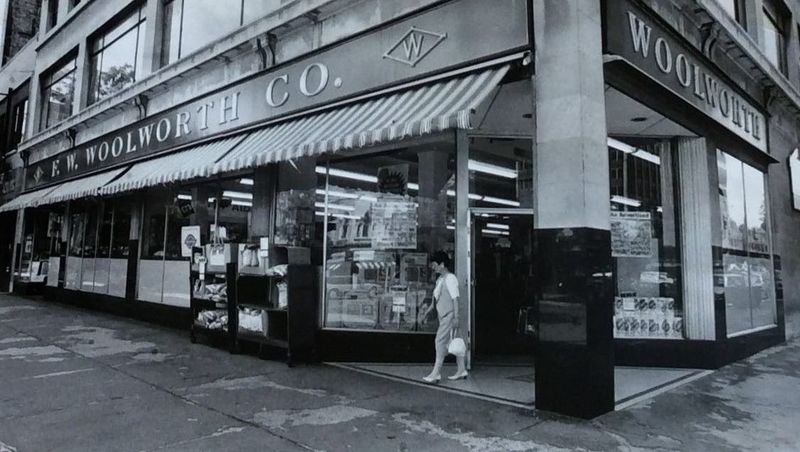
In 1869, Frank Winfield Woolworth changed the shopping game by introducing the five-and-dime store. It was like a candy store for adults, with everything priced at either a nickel or a dime. For the first time, shopping became an adventure, and every purchase was a treasure hunt.
The layout was open and inviting, encouraging people to browse and explore. Woolworth’s became the go-to spot for a variety of goods, from household items to small luxuries. Who knew that spending a dime could bring such joy?
This model democratized shopping, making it accessible to a wider audience. People from all walks of life could afford to participate in this retail revolution. Woolworth’s wasn’t just a store; it was a cultural phenomenon. It laid the groundwork for the self-service model we see today. Now that’s a dime well spent!
4. Kroger’s First Steps
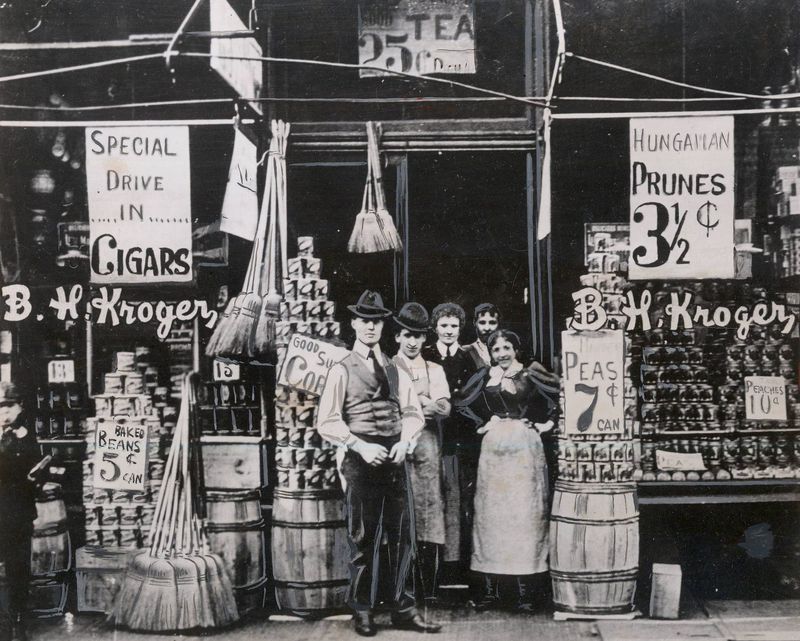
In 1883, Bernard Kroger took a bold leap by investing his life savings to open his first grocery store in Cincinnati. Picture this: a store where quality meets affordability, and customers are more than just transactions—what a novel idea! Kroger believed in manufacturing his own products to ensure consistency and cut costs.
The store was modest but well-stocked, focusing on delivering value to every customer. It became a local favorite, offering a wide range of fresh and packaged items. The personal touch Kroger added made shopping an enjoyable experience.
Kroger’s innovative approach laid the foundation for one of America’s largest supermarket chains. This wasn’t just a grocery store; it was a vision of what retail could be. Kroger’s first steps were more like a sprint towards a future of retail excellence. And the rest, as they say, is grocery history.
5. Piggly Wiggly’s Self-Service Revolution
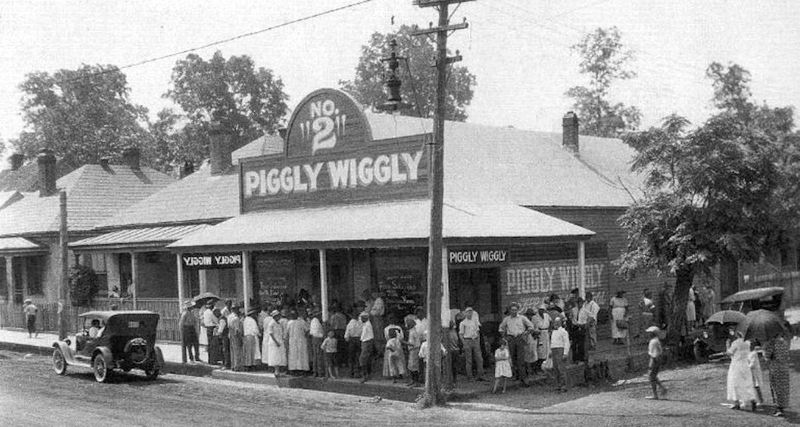
In 1916, Clarence Saunders unleashed a revolution in the grocery world with Piggly Wiggly. Imagine walking into a store and being able to pick out your own items without the mediation of a clerk. It was practically magic, akin to discovering a chocolate fountain in the middle of a diet.
Piggly Wiggly was the first store to introduce a self-service model, transforming how people shopped. The aisles were wide and inviting, stocked with neatly organized products. Customers could now peruse at their leisure, turning what was once a chore into a delightful outing.
This innovation wasn’t just about convenience; it was about empowerment. Shoppers felt a new sense of freedom as they filled their baskets with choices. Piggly Wiggly proved that sometimes, a little self-service can go a long way. The grocery game had changed forever, and there was no turning back.
6. Drive-In Market of Ye Market Place
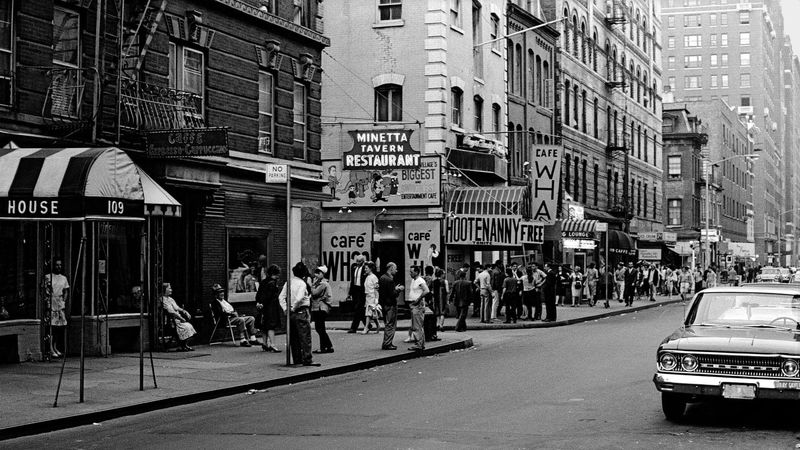
Fast forward to 1924, and you’ll find yourself at Ye Market Place in Glendale, California, where C.L. Peckham introduced the drive-in market. It was the bee’s knees, a place where shopping met the automobile in a harmonious dance. The design featured 23 separate stores arranged in a U-shape around a central parking lot.
Car owners loved the convenience, as they could now drive up and easily access multiple stores. It was retail therapy on wheels, and it quickly became a popular shopping destination. Peckham’s innovation catered to the growing number of car owners, offering a glimpse into the future of retail.
This concept was more than just a layout; it was a cultural shift. It showed how cars were becoming an integral part of daily life. Ye Market Place wasn’t just a drive-in market; it was a drive into the modern era of shopping. A retail revolution was parked in every stall.
7. Home-Based Grocery Sales During The Great Depression
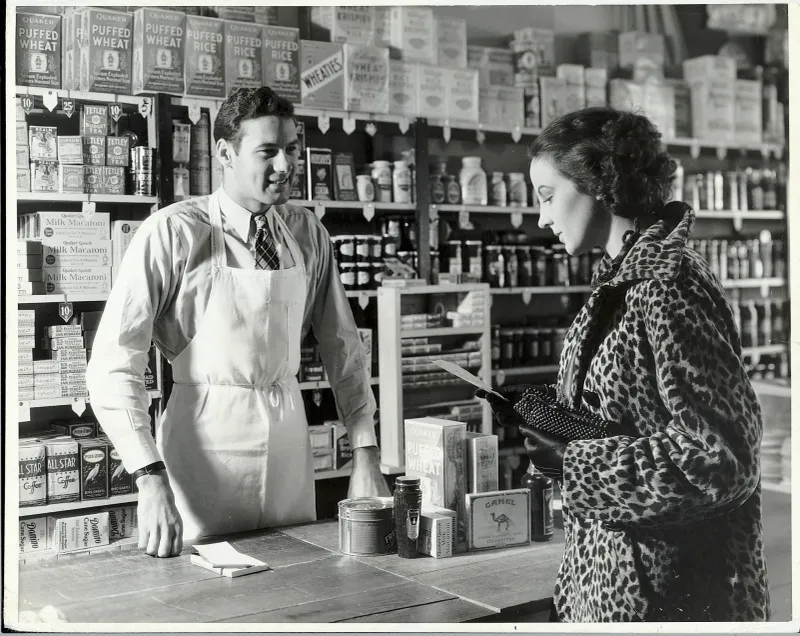
The Great Depression of 1929 wasn’t just a financial downturn; it was a catalyst for innovation in the grocery sector. Families began selling groceries from their homes, turning kitchens and living rooms into makeshift stores. It was like a lemonade stand, but with canned goods and flour.
These home-based businesses sold nonperishables in bulk, offering neighbors an affordable way to stock up. It was community entrepreneurship at its finest, with families banding together to support one another.
This practice laid the groundwork for future family-owned grocery businesses. It wasn’t just about survival; it was about creating opportunities in the face of adversity. Selling groceries from home was more than a business; it was a lifeline for many. The Great Depression may have been tough, but it also brought out the ingenuity in people. Now that’s a silver lining!
8. The Birth of Supermarkets
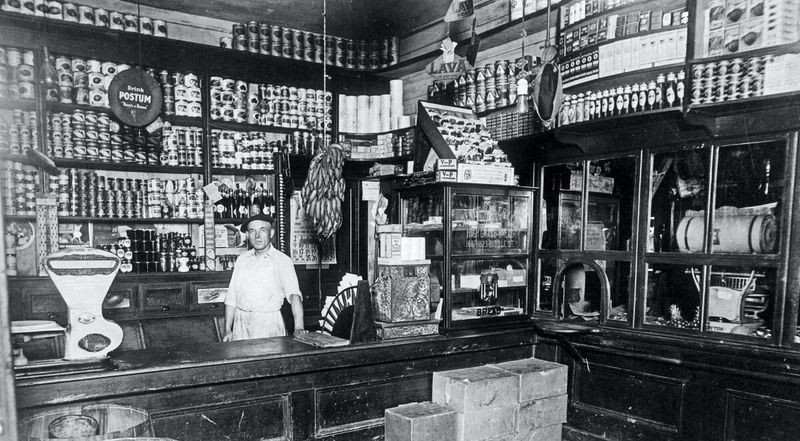
The 1930s saw the birth of supermarkets, a concept that took grocery shopping to new heights. Imagine walking into a store with vast aisles and an array of products, a one-stop-shop for all your needs. It was like finding a treasure chest at the end of a rainbow.
Supermarkets offered the convenience of variety under one roof, making shopping a breeze for busy families. The introduction of shopping carts added another level of ease, allowing customers to buy more in one trip.
This innovation wasn’t just about convenience; it was about choice. Shoppers could now compare products and prices, turning grocery shopping into a more informed experience. Supermarkets weren’t just stores; they were a new way of life. And they quickly became a staple in communities across America.
9. The Introduction of Shopping Carts
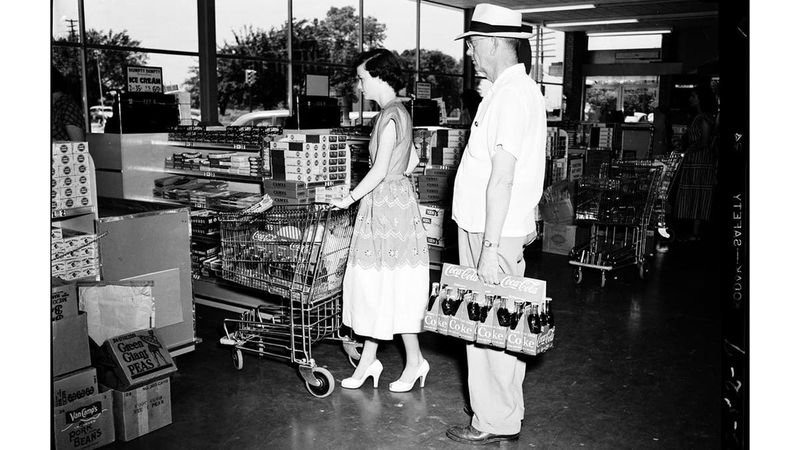
In 1937, Sylvan Goldman, owner of the Humpty Dumpty supermarket chain, changed the way people shopped by introducing the shopping cart. It was like adding wheels to a suitcase—why hadn’t anyone thought of it before? The cart was designed to hold more items, making it easier for shoppers to load up on groceries without juggling bags.
At first, customers were hesitant, unsure of this new contraption. But once they tried it, there was no turning back. Shopping carts quickly became an essential part of the grocery experience, allowing people to shop more efficiently.
This innovation was more than just a convenience; it was a game-changer. It encouraged shoppers to buy more, boosting sales and changing the retail landscape. The shopping cart was a simple yet revolutionary idea that transformed the way we shop. Now that’s what I call a wheel deal!
10. S&H Green Stamps: Loyalty Program Pioneer
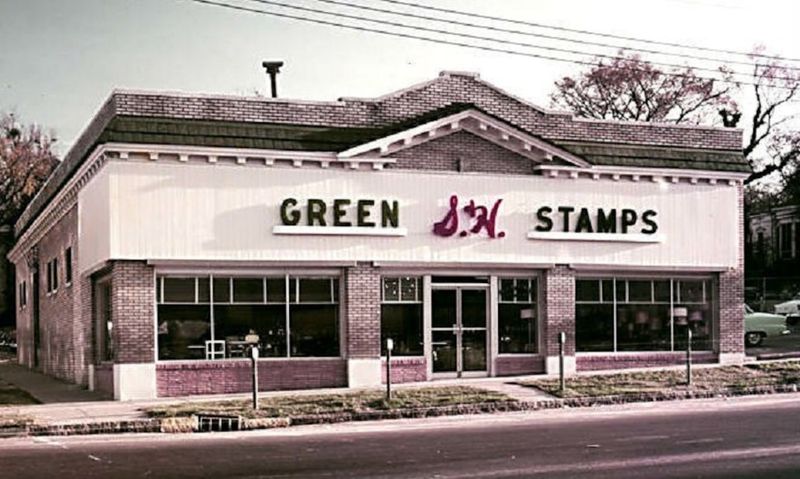
The introduction of S&H Green Stamps in the 1930s was the beginning of customer loyalty programs. Picture this: collecting stamps with every purchase and redeeming them for fabulous prizes. It was like a game show in your grocery cart!
Customers eagerly collected stamps, filling up their booklets for rewards ranging from kitchen appliances to toys. It was an exciting way to encourage repeat business and build brand loyalty.
S&H Green Stamps were more than just a promotional gimmick; they were a cultural sensation. Families bonded over saving stamps, strategizing to get the best rewards. This program set the stage for modern loyalty programs we see today. It wasn’t just about stamps; it was about creating a connection with customers. Now that’s a rewarding experience!
11. The Rise of Discount Stores
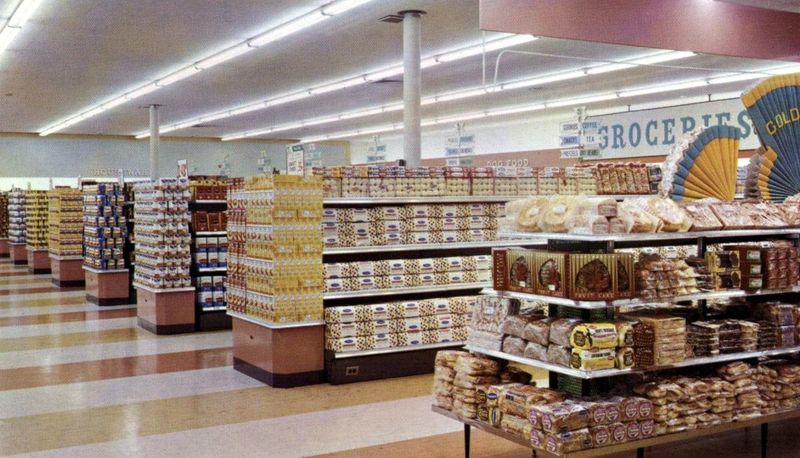
The 1960s saw the rise of discount supermarkets, changing the retail game with their focus on low prices and high volume. It was like finding a clearance rack in every aisle. These stores offered no-frills shopping, focusing on essentials at unbeatable prices.
Discount supermarkets attracted a wide range of customers, from budget-conscious families to savvy shoppers looking for the best deals. They revolutionized the way people shopped, proving that you didn’t need fancy displays to attract customers.
This model was about efficiency and savings, appealing to those who wanted more bang for their buck. Discount supermarkets weren’t just a trend; they were a shift in consumer behavior. They showed that sometimes, less really is more. And they left a lasting impression on the retail landscape.
12. Introduction of UPC Barcodes
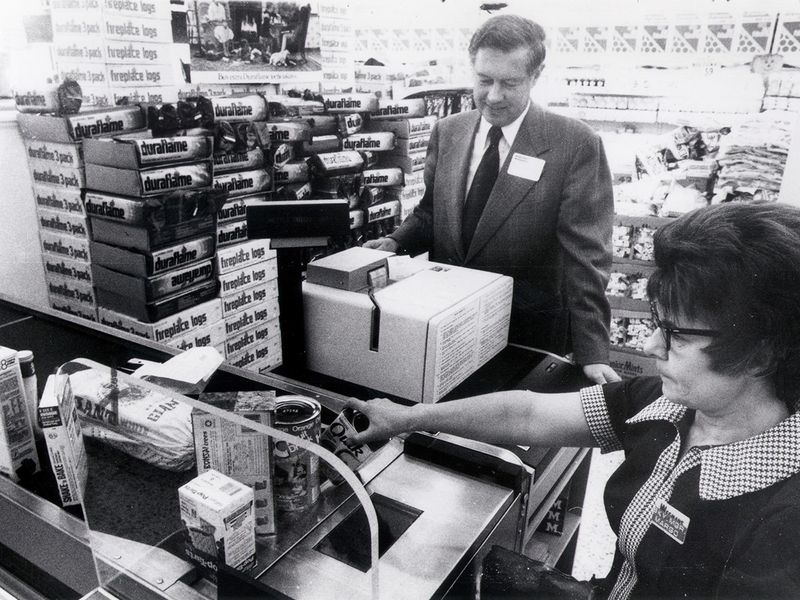
In 1974, the introduction of the Universal Product Code (UPC) barcode was a technological breakthrough that revolutionized the grocery industry. Gone were the days of manually typing prices; now, it was all about the beep.
This innovation made checkout faster and more accurate, reducing the chances of human error. It allowed for better inventory management, helping stores keep track of stock with ease. The humble barcode was a small black-and-white sticker that changed the world of retail.
For customers, this meant shorter lines and more efficient shopping trips. Store owners saw increased sales and happier customers. UPC barcodes weren’t just a technological advancement; they were a leap into the future of retail. It was like having a personal assistant in your pocket. How’s that for progress?
13. The Introduction of Organic Sections
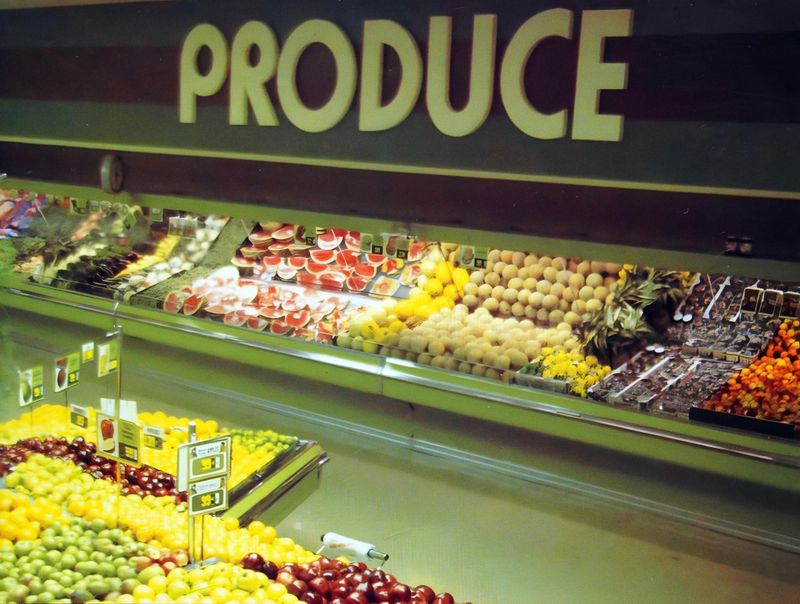
The 1980s marked the introduction of organic sections in supermarkets, catering to the growing demand for natural and sustainable products. Imagine walking into a food haven where health and flavor coexist peacefully, like peas and carrots.
These sections featured organic fruits, vegetables, and other products, providing customers with healthier options. Supermarkets embraced this trend, realizing that consumers were becoming more conscious of what they put in their shopping carts.
This wasn’t just a fad; it was a movement towards healthier living. Organic sections offered transparency and choice, allowing shoppers to make informed decisions. The introduction of organic products wasn’t just about food; it was about a lifestyle. Supermarkets became more than just places to shop; they were destinations for health-conscious consumers. Now that’s a green revolution!
14. The Superstore Experience

The 1990s saw the rise of superstores, where shopping became an experience rather than a chore. These massive stores offered everything from groceries to clothing, electronics, and more. It was like stepping into a wonderland of consumerism.
Superstores provided convenience and variety, making them a one-stop-shop for busy families. They were designed to cater to every need, turning shopping into an adventure. It was retail therapy at its finest.
This model transformed the retail landscape, offering customers more options and better prices. Superstores weren’t just about size; they were about providing value and choice. They redefined what it meant to go grocery shopping, setting new standards for the industry. Who knew shopping could be this fun?
15. The Rise of Online Grocery Shopping
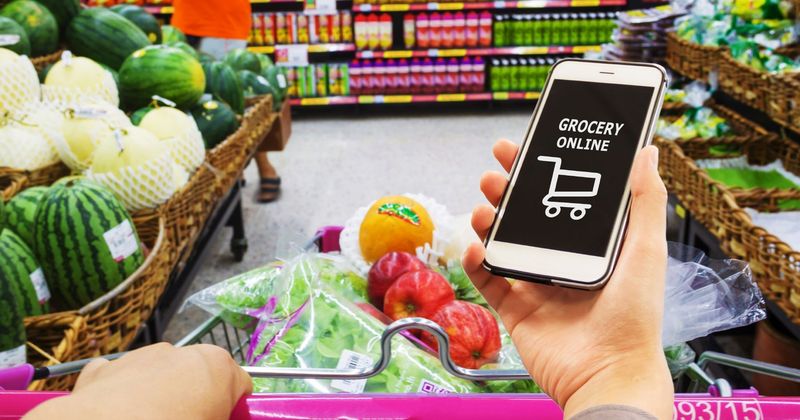
The turn of the millennium brought with it the rise of online grocery shopping, a phenomenon that changed the way we buy food forever. Imagine shopping from the comfort of your couch, with everything just a click away. It was like having a grocery store inside your computer.
Online platforms offered the convenience of shopping at any time, with home delivery services adding an extra layer of comfort. Busy families and tech-savvy consumers embraced this new way of shopping, finding it more efficient and time-saving.
This wasn’t just a trend; it was a revolution. Online grocery shopping provided access to a wider range of products, often at competitive prices. It showed that the future of retail was digital. And it proved that sometimes, you really can have your cake and eat it too.
16. The Emergence of Farmers’ Markets
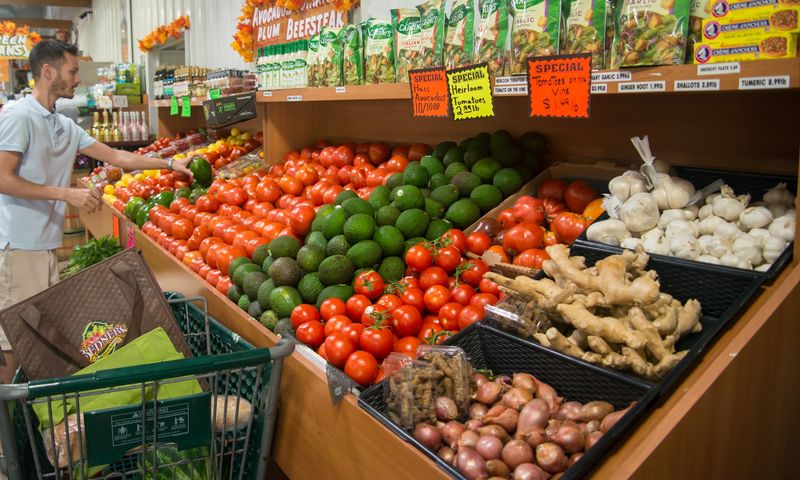
Farmers’ markets have been around for ages, but their resurgence in the early 2000s marked a new chapter in grocery shopping. Picture a vibrant atmosphere filled with fresh produce, homemade goods, and friendly faces. It was like stepping into a postcard from a simpler time.
These markets offered more than just food; they provided a sense of community and connection to local producers. Shoppers enjoyed the freshness and quality of the products, often forming relationships with the vendors.
Farmers’ markets weren’t just about shopping; they were about supporting local economies and promoting sustainability. They offered an alternative to the mass-produced goods found in supermarkets, appealing to those who valued quality over convenience. It was a reminder that sometimes, going back to basics is the way forward.
17. The Convenience of Grocery Delivery Services

The rise of grocery delivery services in the 2010s brought convenience to a whole new level. Imagine never having to leave your house to get your groceries—it’s like having your own personal shopper.
These services offered a range of options, from fresh produce to pantry staples, delivered right to your doorstep. Busy urban dwellers and those seeking convenience quickly adopted this model.
This innovation wasn’t just about convenience; it was about adapting to modern life. Delivery services made it easier for people to access quality products without the hassle of going to the store. They showed that sometimes, the best shopping experience is the one that comes to you. Now that’s service with a smile!
18. The Rise of Specialty Stores
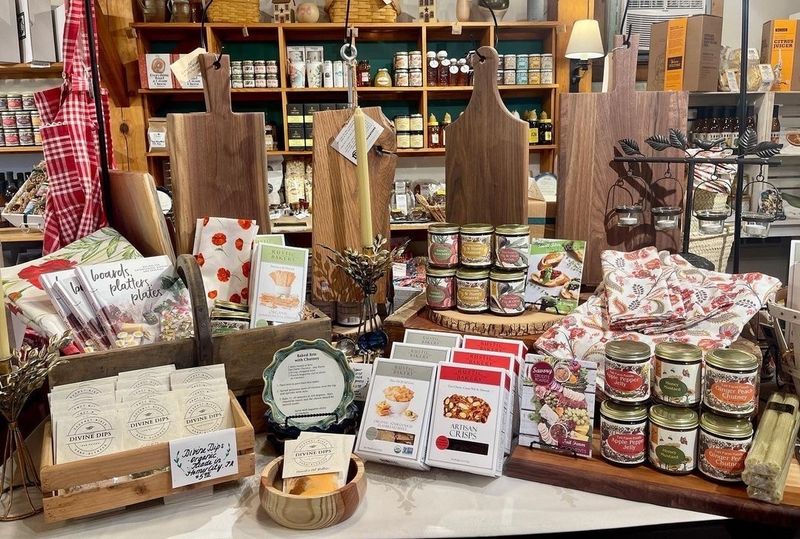
The 2010s also saw the rise of specialty grocery stores, focusing on artisanal and gourmet products. Imagine walking into a store where every item feels like a curated masterpiece. It’s like visiting an art gallery, but for food.
These stores catered to food enthusiasts and those looking for unique ingredients. They offered a personalized shopping experience, with knowledgeable staff ready to assist with selections.
This trend wasn’t just about luxury; it was about choice and quality. Specialty stores provided an alternative to mass-market products, appealing to those who wanted something different. They showed that sometimes, less is more, and that quality trumps quantity. Now that’s a taste of something special!
19. The Adoption of Self-Checkout Lanes
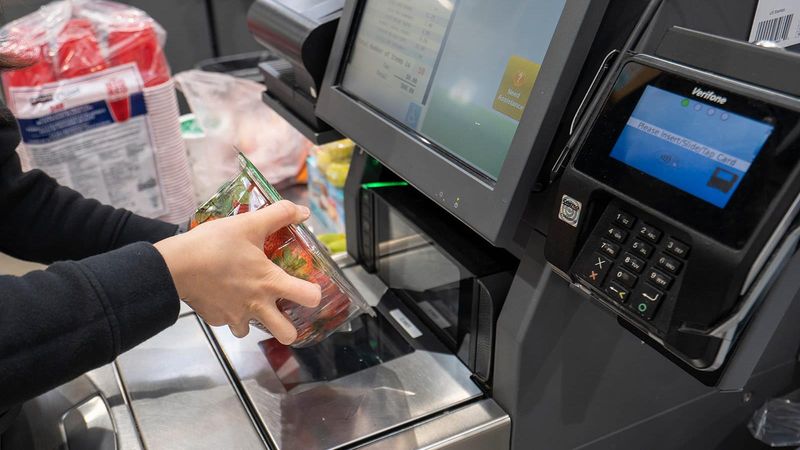
The adoption of self-checkout lanes in the 2010s was a significant shift in the grocery shopping experience. Imagine playing the role of cashier, scanning your own items at the checkout. It’s like a supermarket role-playing game!
These lanes offered speed and convenience, allowing customers to skip long lines and be on their way faster. They appealed to tech-savvy shoppers who appreciated the autonomy and efficiency of the process.
Self-checkout wasn’t just about speed; it was about empowerment. Shoppers enjoyed the control it gave them over their shopping experience. It was a modern twist to an age-old activity, proving that sometimes, the best service is self-service. Now that’s a checkout with a twist!
20. The Introduction of Click-and-Collect Services
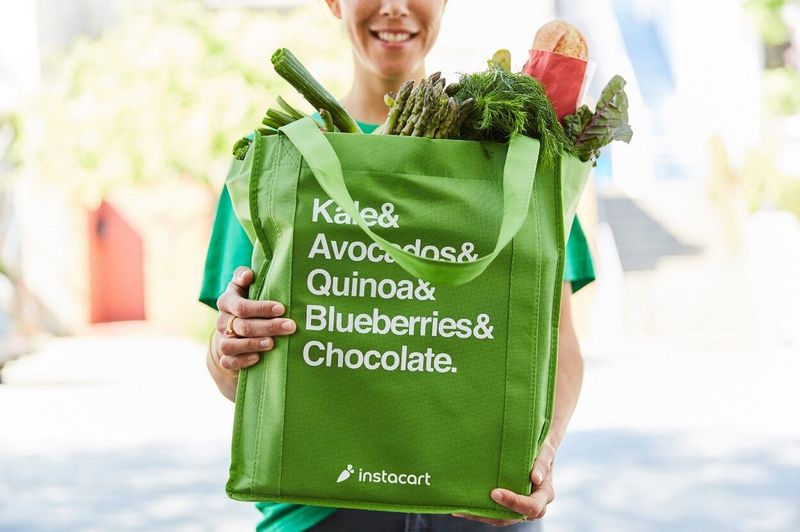
The introduction of click-and-collect services in the 2010s offered a new way to shop. Imagine ordering your groceries online and picking them up at your convenience. It’s like a drive-thru for groceries.
This service provided flexibility and time-saving benefits, catering to busy families and professionals. It combined the convenience of online shopping with the immediacy of in-store pickup.
This trend wasn’t just about convenience; it was about adapting to changing consumer needs. Click-and-collect showed that the future of shopping was all about choice and flexibility. It was a win-win for both retailers and customers. Now that’s a click worth collecting!
21. The Rise of Subscription Meal Kits
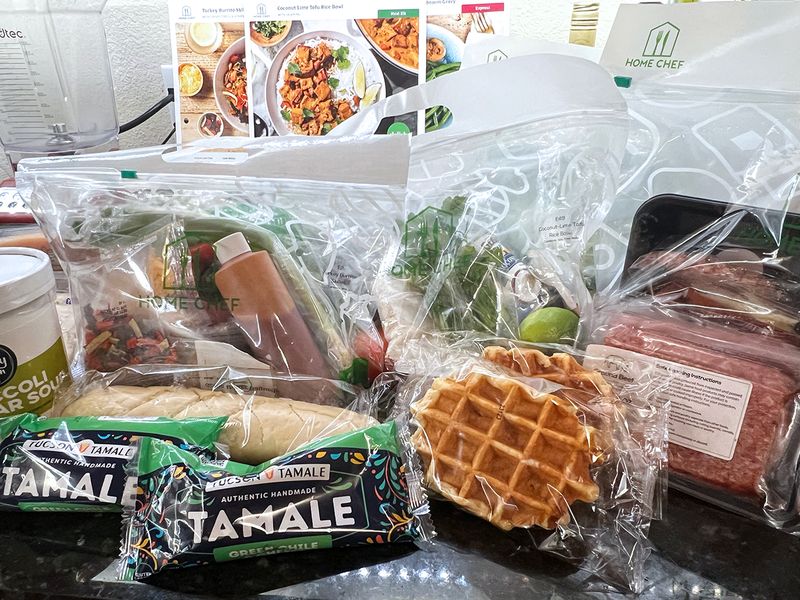
Subscription meal kits, emerging in the 2010s, revolutionized how people approached cooking and grocery shopping. Picture receiving a box filled with fresh ingredients and step-by-step recipes at your doorstep. It’s like having a personal chef, minus the hat.
These kits catered to busy individuals looking for convenient, healthy meal options. They offered variety and creativity, allowing people to explore new cuisines without the hassle of meal planning.
This trend was about more than just convenience; it was about making cooking accessible and fun. Subscription meal kits brought a touch of gourmet into everyday life, proving that anyone could be a chef in their own kitchen. Now that’s a recipe for success
22. The Integration of AI in Grocery Shopping
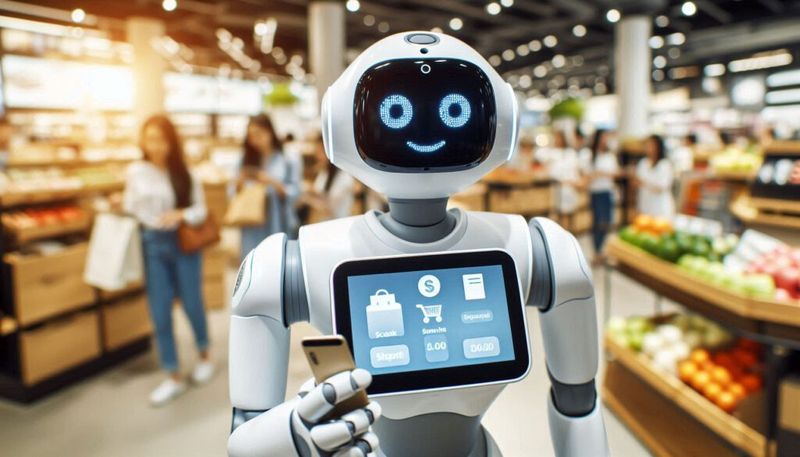
The integration of AI in grocery shopping has opened new doors to efficiency and personalization. Imagine a store where virtual assistants guide you through aisles and recommend products based on your preferences. It’s like having a shopping buddy with a digital twist.
AI-powered kiosks and apps have streamlined the shopping process, offering personalized recommendations and efficient inventory management. They cater to tech-savvy consumers looking for a seamless experience.
This innovation isn’t just about technology; it’s about enhancing the shopping experience. AI has transformed grocery shopping into a personalized journey, proving that the future is now. It’s a digital revolution in the world of groceries, making every shopping trip a smart experience.
23. The Eco-Friendly Revolution in Grocery Packaging

The eco-friendly revolution in grocery packaging has transformed how we think about sustainability. Imagine a world where your grocery bags are as green as your vegetables. It’s like nature and shopping have finally found common ground.
Supermarkets have embraced eco-friendly packaging, offering recyclable, biodegradable, and reusable options. This shift caters to environmentally conscious consumers looking to reduce their carbon footprint.
This isn’t just a trend; it’s a commitment to the planet. The eco-friendly revolution is about making sustainable choices accessible to everyone. It shows that small changes can make a big impact. Now that’s a green choice worth making!
